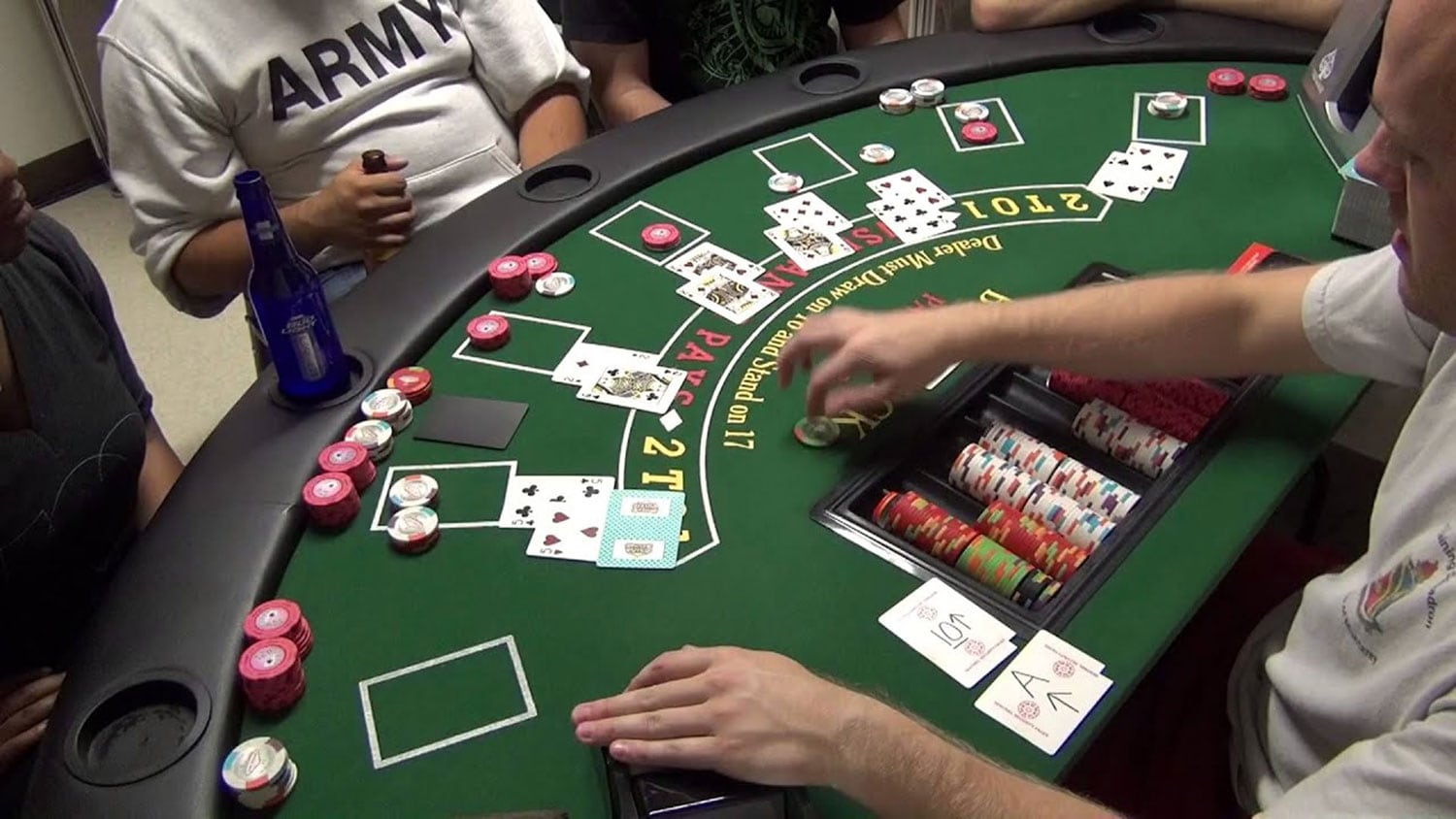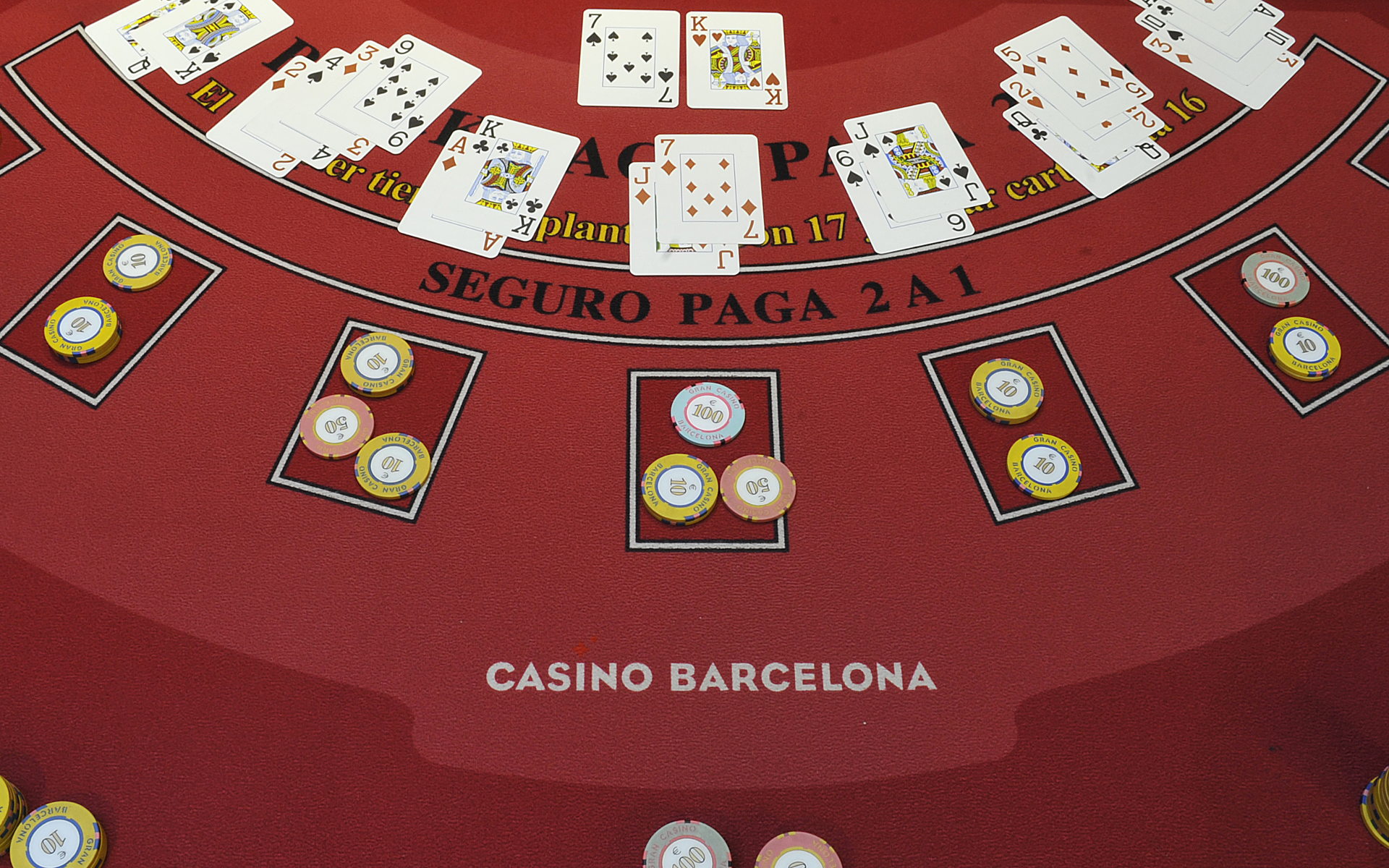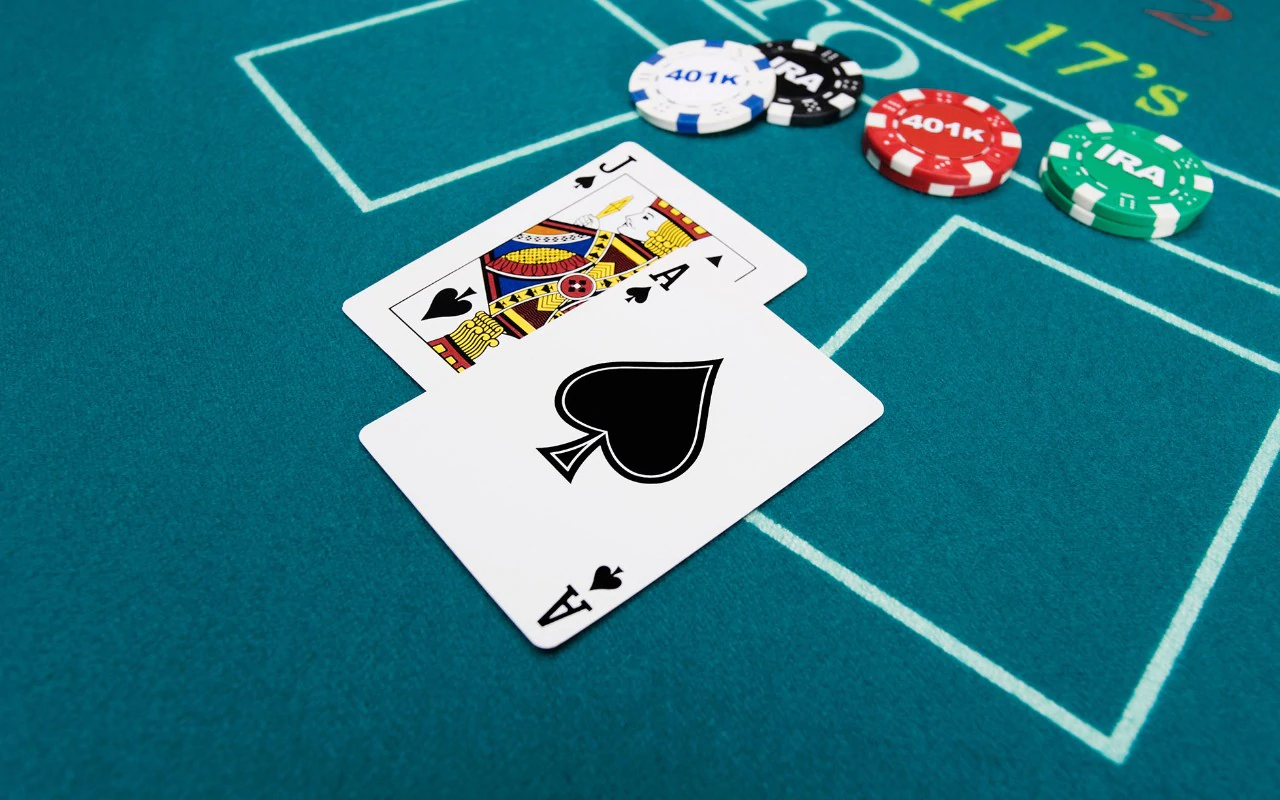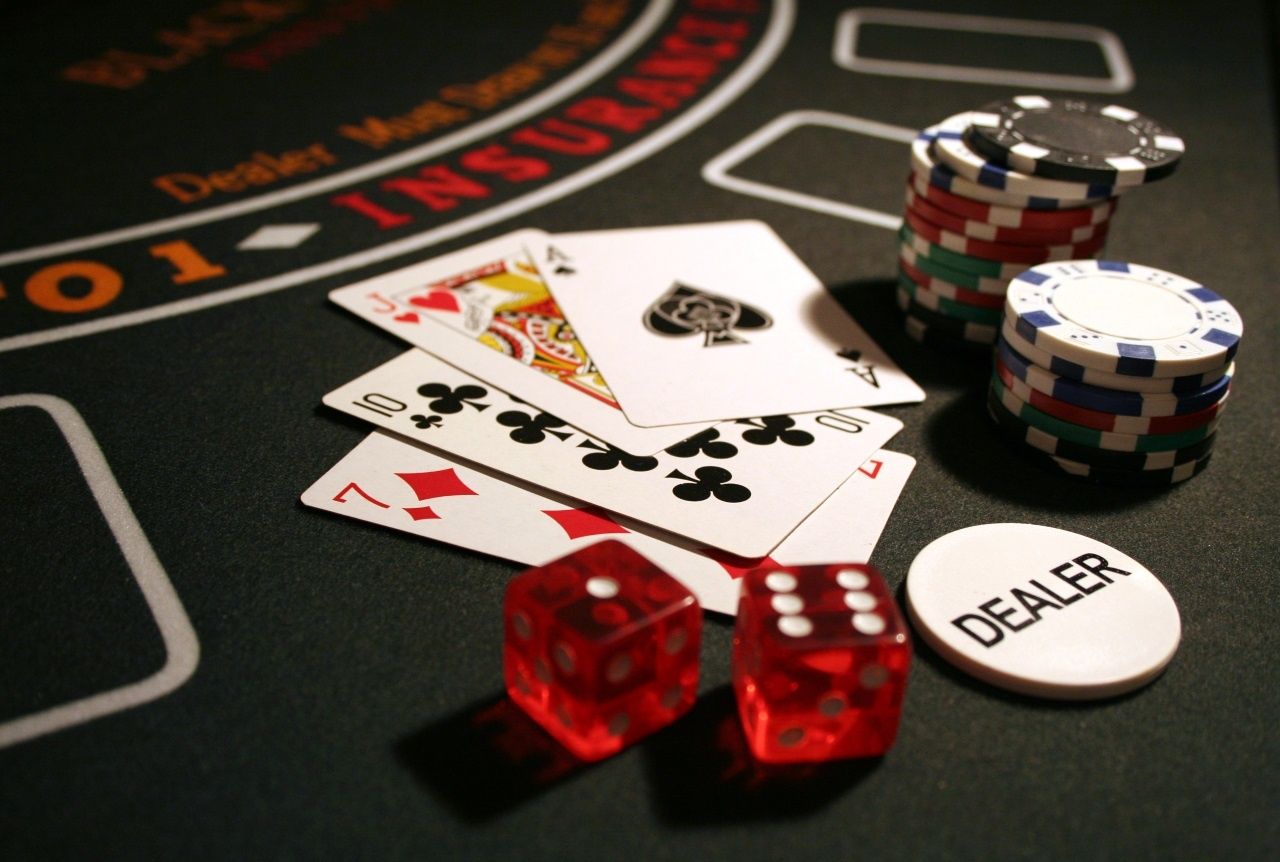Introduction
What Is A Push In Blackjack: In the exhilarating world of Blackjack, a popular card game played in casinos worldwide, the term “push” holds a special significance. As players engage in strategic battles against the dealer, the possibility of a push becomes an integral part of the gameplay experience. But what exactly does it mean to have a push in Blackjack?
A push in Blackjack occurs when the player’s hand and the dealer’s hand end up with the same total value, resulting in a tie. When this happens, neither the player nor the dealer emerges as the winner, and the player’s original bet is returned, leaving their chip stack unchanged. While pushes may not deliver the adrenaline rush of a victorious win, they offer a moment of neutrality in the fast-paced game, influencing the player’s decisions and overall outcomes.
Throughout this exploration, we will delve into the mechanics of a push, uncover its impact on the game, and understand how it affects players’ bankrolls and strategic choices. By grasping the essence of a push, Blackjack enthusiasts can refine their gameplay and embrace the nuances of this thrilling casino classic. Join us on this journey to unravel the mysteries behind the elusive yet compelling phenomenon of a push in Blackjack.

What is a “push” in Blackjack?
A “push” in Blackjack refers to a situation where the player’s hand and the dealer’s hand end up with the same total value. In this scenario, neither the player nor the dealer wins or loses the hand. Instead, the player’s original bet is returned to them without any additional winnings.
In the game of Blackjack, a “push” refers to a specific outcome that occurs when the player’s hand and the dealer’s hand have the same total value, resulting in a tie. When a push occurs, neither the player nor the dealer wins or loses the hand, and the player’s original bet is returned.
The goal of Blackjack is for players to achieve a hand value that is closer to 21 than the dealer’s hand, without exceeding 21, commonly known as “busting.” If the player’s total exceeds 21, they automatically lose the hand, regardless of the dealer’s hand. Conversely, if the dealer’s hand goes over 21, the player wins, provided their hand is still within the allowed limit.
However, when both the player and the dealer end up with the same total, neither party gains an advantage, resulting in a push. This outcome is neutral, and no money changes hands. The player’s bet remains intact for the next round.
How do pushes work in blackjack?
If your hand is closer to 21 than the dealer’s hand, you win. If your hand is less than the dealer’s hand, the house wins. If you tie the dealer’s hand or the dealer draws 22, you “push” (nobody wins or loses)
In Blackjack, pushes occur when the player’s hand and the dealer’s hand have the same total value, resulting in a tie. When this happens, neither the player nor the dealer wins or loses the hand, and the player’s original bet is returned. Pushes are a common part of the game and are crucial to understanding the rules and outcomes.
To explain further, when a Blackjack game begins, players place their bets, and the dealer deals two cards to each player, including themselves. The objective is to get a hand value as close to 21 as possible without exceeding it. Number cards are worth their face value, face cards (King, Queen, Jack) are worth 10, and Aces can be counted as either 1 or 11, depending on which value benefits the hand more.
If the player’s total exceeds 21, they “bust” and lose the hand, regardless of the dealer’s hand. Conversely, if the dealer’s total exceeds 21, the player wins, provided their hand is still within the allowed limit.
When both the player and the dealer have the same total, the result is a push. No money changes hands, and the player’s original bet is returned to them. It’s as if the hand never took place, and the player gets another opportunity to try their luck in the next round.
Pushes add an element of neutrality to the game and are an essential aspect for players to consider when strategizing their bets and decisions during a game of Blackjack.
What does push 22 mean in blackjack?
PUSH 22 If the dealer busts with a point total of 22, all player blackjack bets in action are pushes. The Push 22 bonus wager wins if the dealer busts with a total of 22, and the players hand does not exceed a point total of 29.
In Blackjack, “Push 22” refers to a specific rule variation that is sometimes used in certain versions of the game, particularly in some online or casino variants. Under the Push 22 rule, if the dealer busts with a hand value of 22 (meaning their hand totals 22 points), all remaining player hands that are still in play will result in a push instead of an automatic win for the players.
Push 22 is a notable departure from the standard Blackjack rules, and it can significantly affect the gameplay and player strategy. Players need to be aware of this rule variation when playing a game that includes Push 22, as it alters the usual risk-reward dynamics associated with busting hands.
It’s important for players to understand the specific rules of the Blackjack variant they are playing, as different rule variations can impact the odds and outcomes of the game. Push 22 is just one of many rule variations that casinos may employ, and players should be mindful of these variations to make informed decisions during their Blackjack gameplay.
What is a push on 20 in blackjack?
In a nutshell, blackjack push means a tie, the case when the dealer and the player have the same value and they neither win nor lose. Keep in mind that push is accepted when the game is finished at no lower than 17 points and no higher than 21. If the player and the dealer have more, they would bust.
In Blackjack, a “push on 20” refers to a specific situation where the player’s hand and the dealer’s hand both have a total value of exactly 20 points, resulting in a tie. When this occurs, neither the player nor the dealer wins or loses the hand, and the player’s original bet is returned.
Having a total of 20 in Blackjack is considered a strong hand, and it is typically challenging for players to improve upon it without risking the possibility of exceeding 21 and busting. The same applies to the dealer’s hand. When both the player and the dealer end up with the same hand value of 20, it leads to a push, indicating that the outcome is neutral.
In a push on 20, no money changes hands, and it’s as if the hand never took place. The player’s bet remains intact for the next round. While it might be disappointing not to win with a strong hand like 20, it also means the player avoids losing their bet, providing another opportunity to try for a more favorable outcome in the subsequent round.
A push on 20 is a part of the natural ebb and flow of Blackjack, and players should be aware of this possibility when considering their betting and playing strategies to maximize their chances of success in the game.
Does a push affect my bankroll or chip stack?
No, a push does not affect your bankroll or chip stack. When a push happens, your original bet is simply returned to you, and you neither gain nor lose any chips. It’s as if the hand never happened, except that the cards are collected, and you proceed to the next hand.
A push does affect your bankroll or chip stack in Blackjack. When a push occurs, neither the player nor the dealer wins or loses the hand, and the player’s original bet is returned. Essentially, the player’s bankroll remains unchanged, and their chip stack remains the same after a push.
Let’s break it down: when you place a bet at the beginning of a Blackjack hand and the game results in a push, the chips you wagered are returned to you. This means that you neither gain nor lose any chips from that particular hand.
While a push may not impact your chip stack directly, it does have implications on the overall progression of your bankroll. Since a push doesn’t generate any winnings, it doesn’t contribute to increasing your bankroll. However, it also means that you don’t lose any money from your bankroll during a push, which can be seen as a form of protection against losses.
In the long run, how often you experience pushes can influence the pace at which your bankroll grows or diminishes. If you frequently encounter pushes, your bankroll might not see significant growth, but it can act as a buffer against severe declines.

How does a push impact the outcome of the Blackjack game?
Since a push does not affect your chip stack or bankroll, it has no significant impact on the overall outcome of the game. It is essentially a neutral result that allows you to continue playing without any financial loss.
A push in Blackjack has a significant impact on the outcome of the game, both in terms of player strategy and overall gameplay dynamics. When a push occurs, the player’s hand and the dealer’s hand have the same total value, resulting in a tie. This means that neither the player nor the dealer wins or loses the hand, and the player’s original bet is returned.
The impact of a push can be seen in several ways:
- No Gain or Loss: The player neither gains nor loses any chips from a hand that ends in a push. While it may not be as satisfying as winning, it serves as a form of protection against losses, helping to preserve the player’s bankroll.
- Strategic Consideration: Experienced Blackjack players factor in the possibility of pushes when making decisions during the game. For example, if the player has a strong hand (like a total of 20) and the dealer’s upcard is weak, they might choose to stand, knowing that a push is still better than risking a loss by hitting and potentially busting.
- Game Progression: Pushes affect the pace of the game and can lead to longer gameplay sessions. They provide players with additional opportunities to play hands without making a new bet, contributing to a more extended and engaging gaming experience.
- House Edge: In games with a push rule, the house edge may be slightly higher because pushes give the casino a small advantage, as the player doesn’t get their bet back on tied hands.
Is a push a common occurrence in Blackjack?
Yes, pushes are relatively common in Blackjack, especially in games with multiple decks and favorable playing conditions. The frequency of pushes is influenced by the specific rules of the Blackjack variant being played and the skill level of the players involved.
Pushes are a relatively common occurrence in Blackjack, especially when the game is played with multiple decks and standard rules. The frequency of pushes is influenced by the dynamics of the game, the number of decks in use, and the specific rule variations applied.
In standard Blackjack, the most common total that leads to a push is when both the player and the dealer have a hand value of 20. As 20 is a strong hand, players are less likely to take risks and hit, reducing the chances of going over 21 and busting. Additionally, the dealer often has to follow specific rules on when to hit or stand, which can further contribute to pushes.
The number of decks used in the game also plays a role in the occurrence of pushes. As the number of decks increases, the likelihood of pushes rises, as the range of possible hand combinations becomes more extensive.
How does a push occur in Blackjack?
A push occurs when the player and the dealer have hands with equal total values. For example, if both the player and the dealer have a hand value of 18, it results in a push. The total value of a hand is the sum of the numerical values of the cards in the hand, where face cards count as 10 and Aces can be worth either 1 or 11, depending on which value benefits the hand the most.
A push occurs in Blackjack when the player’s hand and the dealer’s hand have the same total value. This typically happens when both the player and the dealer end up with a hand value that is not over 21 but equal to one another. For example, if the player’s hand consists of a 10 and a 10 (totaling 20), and the dealer’s hand also consists of a 10 and a 10 (totaling 20), it results in a push.
Several scenarios can lead to a push in Blackjack:
- Both the player and the dealer have a total of 17, 18, 19, 20, or 21, and neither hand exceeds 21.
- Both the player and the dealer have Blackjack, which occurs when their initial two cards equal 21.
- Both the player and the dealer have the same hand total, regardless of the specific card combination.
When a push occurs, neither the player nor the dealer wins or loses the hand. The player’s original bet is returned, and it’s as if the hand never took place. The game continues with the player having the same chip stack they had before the push.

Conclusion
A push in Blackjack is a fascinating aspect of the game that brings a unique dimension to the player’s experience. It occurs when both the player and the dealer end up with the same hand value, resulting in a tie and the player’s original bet being returned. While not as exhilarating as a win or as disheartening as a loss, pushes play a crucial role in influencing player decisions and overall gameplay dynamics.
Understanding the concept of a push is essential for players to develop effective strategies and manage their bankrolls wisely. Embracing the possibility of a push allows players to make informed choices during critical moments in the game, such as deciding whether to hit or stand with strong hands like 20.
The Blackjack variant being played, the number of decks in use, and any additional rule variations applied. Staying aware of these factors helps players adapt their approach and maintain composure during challenging moments.
In the end, while the thrill of winning remains the ultimate goal in Blackjack, embracing the concept of a push adds depth and excitement to the game. Armed with this knowledge, Blackjack enthusiasts can navigate the tables with confidence and revel in the ever-evolving dance of chance and strategy that defines this timeless casino classic.










